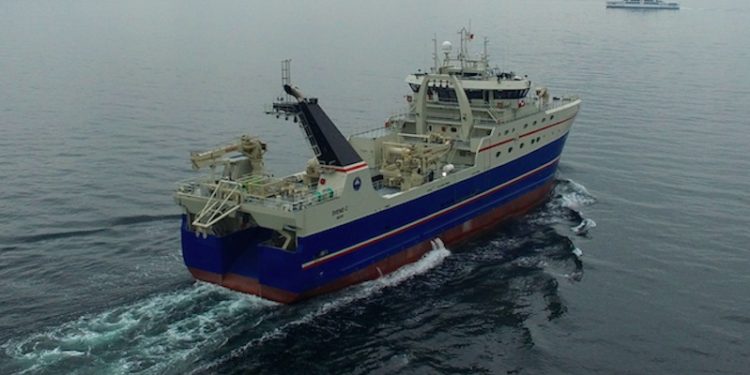After a year’s preparation between the two companies, Marport Scala and Scantrol iSYM equipment can now be integrated to control winch systems.
Icelandic fishing electronics specialist Marport and Norwegian winch control company Scantrol have developed routes to integrate the functions of their systems, providing a seamless exchange of data between gear-mounted Marport sensors and a trawler’s Scantrol winch management system.
‘It has been a year’s work to fine-tune this,’ said Marport EVP Óskar Axelsson.
‘We are very satisfied with the results and this benefits the skippers who are using these systems. This gives existing Marport and Scantrol users the opportunity to integrate their systems and to make the most of the advantages that this offers.’
He explained that high-resolution data from the Marport sensors, such as the SPE-155-W Speed Explorer detailing flow through the fishing gear is relayed at roughly one second intervals, allowing Scantrol’s Isym winch control system to adjust warp length accordingly, while the Marport system receives precise wire length and tension information direct from the Scantrol winch management system.
‘With this true integration we can bring the benefits of the significantly faster update rate to Scantrol users allowing the system to react quicker to changes than in the legacy systems,’ Óskar Axelsson said, commenting that with multi-rig trawl systems in increasingly widespread use, smart system such as this are essential to ensure that trawl configuration remains optimum.
He commented that this more frequent rate of updating information brings with it a number of advantages, allowing the autotrawl to respond more rapidly to changing conditions.
‘A whitefish trawler towing at four knots covers two metres of seabed per second,’ he said, explaining that the number of readings needed for the autotrawl to react is tied to signal quality and reliability. If quality is good and the signal is considered reliable the system can react immediately. But conditions are not ideal and that information is relayed at twenty second intervals, it could take as much as sixty seconds for the autotrawl to respond. By that time the trawl has made 120 metres of progress.
‘With data updated at one second intervals, the autotrawl can react much faster to changes in the ground the trawler is towing over, which can be crucial when towing on hard ground and in a strong tide. This could make all the difference when fishing under these tough conditions by providing the winch control system with the data it needs to respond as conditions on the seabed change,’ he said, commenting that Marport and Scantrol will work closely to help existing customers who want to improve their systems with higher resolution information and other benefits of upgrading their Scantrol and Marport tools.









